Exploring Its Effectiveness Through Clinical Cases and Practice
Barbotage has earned its place in musculoskeletal medicine as a go-to procedure for treating calcific tendonitis, especially in the shoulder. While the technique is adaptable across joints, its application in the shoulder—home to some of the body’s most mobile and commonly injured tendons—has proven to be both clinically effective and patient-friendly.
This article dives deep into how barbotage is used in shoulder care, highlighting clinical applications, real-world outcomes, and why it remains a trusted intervention among shoulder specialists.
Understanding the Shoulder’s Vulnerability
The shoulder is a ball-and-socket joint with an extraordinary range of motion. However, this flexibility comes with trade-offs—particularly a predisposition to overuse injuries and degenerative changes. The rotator cuff, a group of tendons that stabilize the joint, is often at the heart of shoulder dysfunction.
Calcific tendonitis, a condition characterized by the accumulation of calcium deposits in these tendons (most often the supraspinatus), is one of the top non-traumatic causes of shoulder pain in adults aged 30 to 60.
Why Barbotage Works Well in the Shoulder
Barbotage targets the very source of pain—the calcific deposit—using a non-surgical method that combines real-time imaging with precision aspiration.
Shoulder specialists prefer barbotage for several reasons:
- Minimally invasive and outpatient-friendly
- Faster recovery compared to surgical alternatives
- Highly effective in early to moderate stages of calcification
- Allows real-time imaging using ultrasound, critical in the anatomically dense shoulder area
Clinical Case Spotlight #1: The Active Professional
Patient: 38-year-old marketing executive
Complaint: Sharp pain when lifting arm above shoulder level
Diagnosis: Calcific tendonitis of the right supraspinatus
Initial Treatment: NSAIDs and physical therapy (6 weeks)
Outcome: Minimal relief
Barbotage Procedure:
- Performed under ultrasound guidance
- 18G needle used for saline flush and aspiration
- Small corticosteroid injection administered post-cleanout
Recovery:
- Returned to work in 2 days
- 90% pain reduction at 2-week follow-up
- Full range of motion restored by 4 weeks
Clinical Case Spotlight #2: The Weekend Athlete
Patient: 52-year-old recreational tennis player
Complaint: Chronic shoulder pain with overhead motion
Imaging: Dense calcium deposit ~12 mm in supraspinatus tendon
Barbotage Approach:
- Double-needle technique for simultaneous flush and aspiration
- Required two saline rounds due to deposit density
- No steroid injection due to patient preference
Results:
- Moderate soreness for 48 hours
- Complete symptom resolution within 3 weeks
- Returned to tennis in 6 weeks without recurrence
Barbotage vs. Other Treatment Options
| Treatment | Invasiveness | Recovery Time | Success Rate | Common Use |
| Physical Therapy | Non-invasive | Variable | Moderate | First-line |
| Steroid Injection | Minimally invasive | 1–2 days | Temporary relief | Inflammation control |
| Barbotage | Minimally invasive | 1–2 weeks | High | Calcific deposits |
| Arthroscopic Surgery | Invasive | 6–12 weeks | High | Severe or refractory cases |
Barbotage strikes a balance—it’s less intense than surgery but often more effective than medications or injections alone, especially when deposits are large or stubborn.
Application Beyond the Shoulder: Brief Overview
While barbotage is most commonly performed on the shoulder, it’s also used in:
- Hip: Targeting calcification in the gluteal tendons
- Elbow: Treating lateral epicondylitis with associated calcification
- Wrist and hand: In rare cases, for localized calcific buildup
However, none of these sites have the same frequency of calcific tendonitis—or the same procedural success rate—as the shoulder.
Shoulder-Specific Considerations
- Deposit Location: Supraspinatus is most common, but infraspinatus and subscapularis involvement isn’t rare
- Deposit Type: Soft, toothpaste-like deposits aspirate more easily than dense, chalky ones
- Patient Anatomy: The tight subacromial space requires a skilled hand and real-time imaging
These nuances make it vital that shoulder barbotage be performed by specialists familiar with regional anatomy and proficient in musculoskeletal ultrasound.
Barbotage continues to be a cornerstone of non-surgical shoulder care. Its adaptability, precision, and quick recovery profile make it a valuable option for treating calcific tendonitis—especially in active adults who want to avoid extended downtime.
For shoulder specialists, the combination of clinical judgment, skilled ultrasound use, and patient-centered follow-up ensures the best results.
FAQs About Shoulder Barbotage in Joint Disorders
1. Does barbotage work better than a steroid injection alone?
Yes, in many cases. While steroids reduce inflammation, barbotage removes the actual source of pain—calcium deposits.
2. Is barbotage covered by insurance?
Often yes, especially when conservative measures have failed. Coverage may vary by provider and region.
3. Can barbotage be repeated?
It can be, though most patients only require one treatment. Follow-up imaging determines if retreatment is necessary.
4. How is pain managed post-procedure?
Over-the-counter medications like acetaminophen or ibuprofen typically suffice. Ice and rest help too.
5. What happens if barbotage doesn’t work?
If symptoms persist, your shoulder specialist might consider additional imaging, repeat barbotage, or arthroscopic removal as a last resort.
The information in this article is for educational purposes and Dr Kruse may recommend alternate treatment options to best address the individual patient’s needs.
